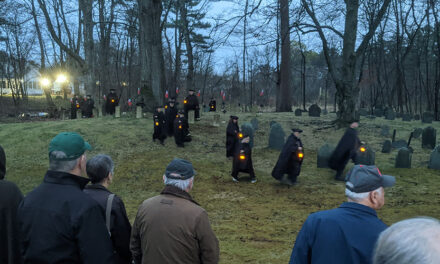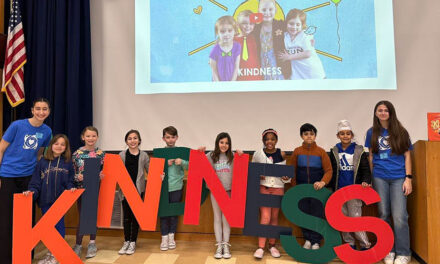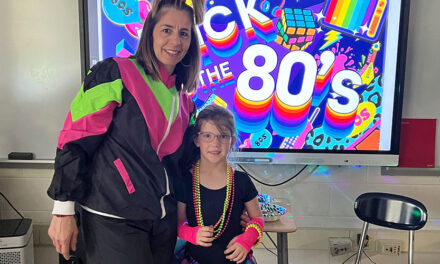Published October 23, 2019
By DAN TOMASELLO
LYNNFIELD — Officials are looking to expand the schools’ science, technology, engineering and math (STEM) program in the future.
School Committee Chairman Jamie Hayman said during the Oct. 15 meeting that the committee and Superintendent Jane Tremblay recently had a “robust conversation about where we want the district to go in the next five years.”
“One of the things we talked about was taking our STEM program across the district to the next level,” said Hayman. “We really want it to be among the top STEM programs in the state over the next five years.”
In the wake of the school board’s proposal to expand the STEM program, Tremblay formed a fact-finding team that has been tasked with evaluating the school system’s existing programs. The team is also conducting research about STEM programs in different school districts.
“We set out to observe STEM in a variety of districts in order to best inform the direction Lynnfield Public Schools should take to build a comprehensive program for students in grades K-12,” said Tremblay.
Tremblay said the team supported the School Committee’s desire to “beef up” the district’s STEM program.
“A robust STEM program is not about doing more science, more technology, better engineering and more math,” said Tremblay. “It’s so much more than that.”
Current STEM programs
The fact-finding team gave the school board an overview of the STEM initiatives currently taking place in the town’s schools.
Elementary Math/Science Curriculum Director Christina Perry said the elementary schools’ science curriculum includes an engineering unit.
Digital Learning Coach Sarah Perkins said the Maker Spaces at the two elementary schools have taught students a variety of technology skills such as coding, robotics and video production.
“Students are really driving those projects,” said Perkins. “We do a lot of creative projects in those spaces. We are doing novel engineering projects in grades K-4. What you do is take a character from a book who is facing a problem, and the students themselves have to identify the problem. Students then have to design a solution to solve the character’s problem.”
Lynnfield Middle School STEM Director Katie Ambroise said LMS uses “STEM in a variety of ways.”
“We have a STEM course that is an exploratory class,” said Ambroise. “All students in grades 5-8 have this class. It’s for one trimester for once a cycle, which amounts to 20 classes per school year. It focuses on hands-on projects and the engineering and design process.”
Ambroise said students in the STEM class are introduced to the engineering design process in grade 5. She said sixth- graders learn how to create technical drawings and how to manufacture different things. She said seventh-graders learn structural engineering and construction skills. She said eighth-grade students learn how to create different forms of transportation such as solar-powered cars.
“The middle school uses coding in a variety of ways,” Ambroise added.
Perkins has worked on Lynnfield High School’s STEM initiatives with Media Specialist Janice Alpert. She noted Alpert has incorporated LHS’ Maker Space into the high school’s curriculum.
High School Math Department Head Karen Ellis said LHS is offering three full-year Advanced Placement (AP) Computer Science Principles courses this year. She also said the high school is offering two Technology in the 21st Century classes during the first semester. She said LHS will be offering two Computer Science College Prep courses during the second semester.
Math/science teacher Steve Smith said the high school “does a really good job with standard science and math.” However, he said the high school needs to expand the engineering component of the curriculum.
“We do a really good job from the science perspective, but I think we need to go back and layer that engineering perspective more strongly,” said Smith.
Smith noted the high school uses Sphero Robots in Physics courses. He also said the high school’s Environmental Science and Sustainability course requires students to utilize design principles in order to solve problems.
“The Environmental Science and Sustainability course is the one course that we have that is closest to an engineering course,” said Smith. “The main reason why it fits that bill is because it’s a project-based course. Students are physically tackling problems and are often working in teams. A student used CAD software in order to design and build a garden shed for the school.”
Smith said gel electrophoresis, a modern biotechnology technique used to analyze and compare DNA samples, is used in the high school’s Biology and Forensics classes. He also said students in the Environmental Science class collaborated with music students on a joint project that involved having students create working musical instruments.
Site visits
After the teachers gave an overview of the school system’s current STEM programs, the fact-finding team discussed two site visits to Westwood Public Schools and Wayland Public Schools.
“Some of what we saw completely blew us away and made us jealous,” said Tremblay. “And much of what we saw confirmed we have really good teaching practices going on in Lynnfield.”
Perry said school officials were impressed that Westwood Public Schools has a digital learning coach teaching a grade 3 STEM class once a week.
Ambroise said Thurston Middle School in Westwood offers two STEM electives, which are a coding class and an engineering course.
“The engineering class was very similar to a woodshop,” said Ambroise. “They had all of these power tools and it was very hands-on.”
Tremblay said Thurston Middle School established “very clear rules” for students using the power tools.
“Students designed their own key chain,” said Tremblay. “They had to draw it out and get an okay from the teacher. They then had to handsaw a piece of wood so it looked like their design. It was very impressive. Every single student I asked said they love this class.”
Smith was impressed with Wayland High School’s Innovation, Design and Engineering course, which former VistaPrint employee Jay Moody teaches.
“They are building things and have tools everywhere,” said Smith. “They use 3D printers and a big laser cutter. It started off as a semester course and is now a full-year course. If I was designing an engineering course, this would be it.”
Tremblay noted the team will be making a site visit to Newburyport Public Schools in the future.
In order to expand the school system’s STEM program, Tremblay said school officials need to do a “complete evaluation” of the existing K-12 program.
“We need to make sure that we have a comprehensive program that is connecting all of the dots so it’s seamless,” said Tremblay. “We need to start laying out what this is going to look like at the elementary level, the middle school level and the high school level. There is a lot more work to do before it hits prime time.”
SC commends work
School Committee member Stacy Dahlstedt thanked Tremblay and the fact-finding team for beginning the process of expanding the district’s STEM program.
“This is very hopeful for me,” said Dahlstedt.
School Committee Vice Chairman Rich Sjoberg agreed.
“We started talking about this in June and look how far we have come,” said Sjoberg. “I know it’s going to be great once we figure it all out.”
Hayman said the School Committee recognizes expanding the STEM program “isn’t going to happen overnight.”
“We appreciate the work that you are doing and you have our support,” said Hayman.
School Committee member Tim Doyle suggested that Tremblay reach out to Community Schools Director Michaelann Herook about potentially offering an after-school STEM course until the district launches a revamped program during the school day.




